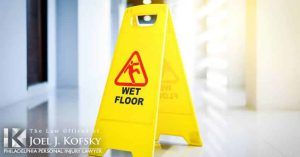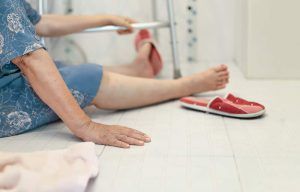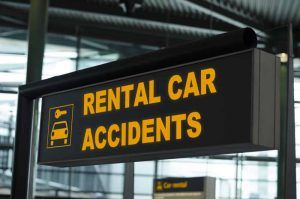Elderly and disabled Pennsylvanians face unique challenges every day operating in a world largely intended for healthy, able people.
Obstacles abound, many seemingly intent on making it harder for disabled and older Americans to stay active. Elderly and disabled persons are more likely to be seriously injured in a slip, trip and fall accident.
Businesses in Pennsylvania are required to follow rules established by the Americans With Disability Act (ADA) and the Older Americans Act (OAA), federal regulations that prevent discrimination against elderly and disabled persons. The laws specify that certain conditions must be met by business owners when reasonable.
For example, if a wheelchair ramp can be added to a doorway to allow access, the law requires the business owner to build one. Oversize doorways, accessible restrooms, provisions for service animals and other structural considerations like counter heights and door handle height are also regulated under Title III of the ADA. Information about how to comply with the law is available through the National Federation of Independent Businesses.
Often, simply following the law isn’t enough to prevent slip, trip and fall accidents involving elderly or disabled persons. Slip, trip and fall accidents can involve costly and time-consuming litigation, and can be particularly damaging to businesses when elderly or disabled persons are injured due to negligence.
Avoiding injuries begins with prevention, and employers who make prevention a priority should start by understanding the requirements of the law and properly training employees to prevent likely causes of accidents.
The National Center for Disease Control (CDC) reported in 2015 that one in every five Americans suffers from disability. These can range from obvious disabilities, such as blindness or amputations to disabilities that are not as easily recognizable, like mental illness, dementia and PTSD. Elderly Pennsylvanians are more likely to suffer slip, trip and fall accidents than the average population.
The National Institute on Aging (NIH) says one in three Americans over the age of 65 will suffer a fall. Slip, trip and fall injuries are the leading cause of non-disease related death among Americans over the age of 65 according to the CDC. In most circumstances, the ADA and OOA laws require businesses to prepare for accidents by having a formal business plan. Businesses should establish a comprehensive plan that gives employees clear guidelines on preventing slip, trip and fall accidents and encourages them to prevent accidents from happening.
The plan should provide clear and precise guidelines for employees and set minimum standards of conduct. Employees should be trained to avoid leaving items that block walkways to avoid tripping hazards. This might mean, for example, that boxes being put away on shelves must not be left unattended. Step stools, ladders and like objects should be put away after use.
Dangerous conditions should be brought to customers attention through signs, roped off areas and attentive employees. In most cases, businesses can protect themselves from lawsuits by properly warning people of danger. Should a person choose to ignore the warnings, then become injured, it will be difficult for the person to prove negligence against the property owner. Simply warning consumers of dangers is not enough, and business owners should not expect that signage will protect them from litigation.
Wet, slippery floors and snowy, icy walkways are a reality for Pennsylvanians, and these conditions are among the most dangerous for elderly and disabled persons. Businesses are required to prevent dangerous conditions from being left to exist. Under the law, businesses must take all reasonable measures to remove liquid and ice from walkways and prevent snow from creating dangerous conditions.
Employees should be trained to immediately correct spills and pooling liquid and to properly ensure safety. Installation of hand rails on walkways that become icy and the use of non-slip floor coverings can help prevent slip, trip and fall injuries among elderly and disabled persons.
Snow should be removed from walkways as soon as possible and areas of melting snow should be addressed. Ignoring these dangerous conditions are among the most common for negligence claims against property owners. The National Library of Medicine found that among all slip, trip and fall accidents nationwide between 2001-2008, floor coverings were a leading cause. Making sure that rugs, mats and carpets are securely attached to the floor can help prevent the most common causes. Employees should recognize when a floor covering is creating a potential danger and remove or replace the covering as soon as possible.
Curled carpet edges and coverings lacking skid protection lead to many slip, trip and fall accidents. Nearly thirty percent of the injuries that occur to persons over the age of 65 involve head trauma. Preventing slip, trip and fall accidents requires diligence and attention. Proper training and established guidelines can go a long way to ensuring the safety of elderly and disabled persons and prevent expensive litigation.





